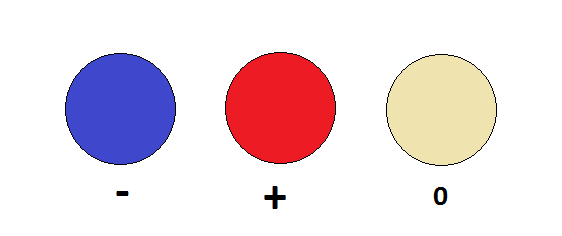Mass is a central concept in physics. Yet, when people go looking for it by…

The Primary Nature of All Things
Philosophy and religion has since the dawn of time dedicated much attention to questions related to the true nature of things.
Myths, religion and theory
Many concepts in modern theoretical physics can be traced back to these early ideas. Ancient Greeks talked of atoms and prime movers. Norse mythology talks of a void and polarity of forces. Christianity has the word and light as primary to everything.
There’s a common idea in all of this: That we need to know the essence of things in order to truly understand the world we live in. Things have to be reduced to their bare essentials.
Modern physics
In modern physics, our obsession with essence has been reduced to math and formulas. Our search for the primary nature of things has become one of mathematical simplification.
We have various constants that relate to forces in nature.
These are studied and analyzed with the aim of finding some common constant that can join them together.
Whenever theorists find such a relationship, we have a break through. What was once explained using two different constants is explained using some common constant.
However, nothing is explained. The constants are merely there to relate one equation to another. Hardly anyone tries to explain what these constants are in physical terms. They are explained in terms of what they do rather than what they are.
Back to basics
The aim of my books on physics has been to break through this reluctance to put things into a proper physical frame.
I’m not writing about formulas. But about the sort of things that may explain the formulas we already have.
Through this process, I’ve landed on a model in which all things in the universe, including time, space and energy, can be explained in terms of four stable particles.
These are the proton, electron, photon and neutrino.

To explain unstable particles like positrons and antimatter, I broke things down further into three particle quanta, first proposed by Morton Spears back in the 1990s.
They are the size of neutrinos and distinguish themselves by their charge.
There are negative, positive and neutral charge quanta.

Charge quanta
Negative and positive charge quanta are so reactive that they combine into photons, electrons and protons. So there are no free floating charge quanta in nature.
But neutral charge quanta do not bind to other quanta. They remain single and largely neutral.
They are rarely sufficiently energetic and charged for us to detect them. But when they are detected we call them neutrinos.
Texture
The phenomenon of charge is explained in terms of texture. There’s wooly texture associated with negative charge, and there’s abrasive texture associated with positive charge.
Neutral charge is an equal mix of of the two textures.
The result of this is a short range force that acts between particles that bump into each other.
Charged quanta interact strongly with their opposites, while neutral quanta interact weakly.
From this, we get strong nuclear forces, and the three weaker field forces known as magnetism, the electric force and gravity.
Energy
Energy is explained as size at the subatomic level.
The more energy something has, the larger it is.
Blue photons are larger than red photons. Protons are larger than electrons. Hot stuff has larger particles at the subatomic than cold stuff.
Things that move and things with potential energy also possess larger sub-atomic particles than their dormant self.

The speed of light
Additionally, we have the fact that all neutrinos and photons move at a semi-constant speed.
The speed of light is constant within any given reference frame. It may be different between reference frames, but not inside one and the same reference frame.
A complete theory of everything
From the above, I built my entire theory.
Everything from quantum-entanglement to gravity is explained.
However, this is not to say that this must be it. The one and only theory to explain it all.
I’m not that delusional.
But I have achieved on thing. I’ve demonstrated that my model is valid, and that it may represent an accurate description of how things work at a fundamental level.
Going beyond my model
My theory was laid out without any speculations into the primary nature of things.
My model doesn’t go beyond Morton Spears’ particle quanta. Because I never need to do this in order to explain my physics.
However, I do end up with some elaborate mechanisms, in particular when it comes to what happens when radiation transforms into inertial matter through electron-positron pair production.

I also need my electrons and protons to be hollow.
There’s also the unexplained nature of the neutrino as a mix of positive and negative texture.
All of this begs for something more fundamental, and my thinking is that particle quanta can best be modelled as bundles of tiny strings.
Norse mythology as string theory
Norse mythology talks of a void into which strands of opposing polarity come into contact with each other.
There are strands of cold and strands of hot. Where they meet, existence emerges, and reality as we know it is formed.
My thinking is similar.
There are strands of wooly strings, and there are strands of abrasive strings.
They bundle together in pairs. Some bundles are purely negative. Others are purely positive, and others still are a mix.
Each particle quantum is a mix of two strands. Hence, we get the three particle quanta proposed by Morton Spears.
Additionally, we have the condition that all of this moves.
Conclusion
Putting this together into a single broad statement, we get that the universe is a void filled with pairs of strings in perpetual motion.




Comments (0)